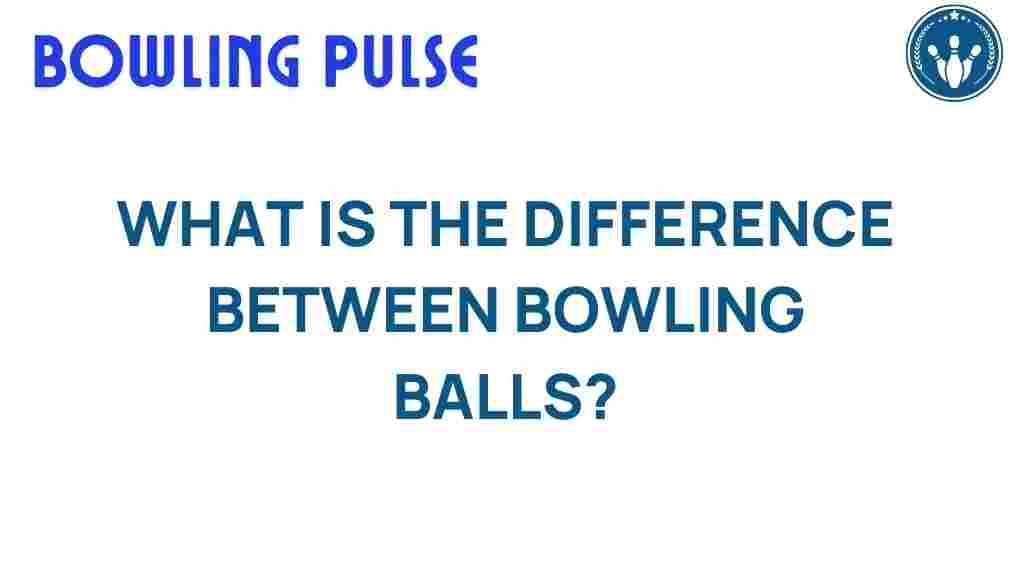Unraveling the Mysteries: What Sets Bowling Balls Apart?
Bowling is a beloved sport enjoyed by millions around the world, offering both recreational fun and competitive excitement. At the heart of this sport lies the bowling ball, a crucial piece of bowling equipment that can greatly influence your overall performance. In this article, we will explore the various types of bowling balls, their unique features, how they affect bowling performance, and tips for choosing the right one for you.
Understanding Bowling Balls
Bowling balls are specifically designed to roll down a lane and knock down pins. However, not all bowling balls are created equal. Understanding the different bowling ball dynamics is essential for players looking to enhance their game. Here are some key factors that differentiate bowling balls:
- Material: Bowling balls are usually made from three types of materials: plastic, urethane, and reactive resin.
- Weight: Bowling balls typically weigh between 6 and 16 pounds, and the weight you choose can affect your grip and control.
- Coverstock: The outer layer of the bowling ball can influence its reaction on the lane.
- Core Design: The shape and density of the ball’s core can affect its balance and rotation as it travels down the lane.
Types of Bowling Balls
To enhance your bowling performance, it is essential to choose the right type of bowling ball. Here are the primary categories:
- Plastic Bowling Balls: Ideal for beginners, plastic balls offer a straight trajectory and are typically less expensive.
- Urethane Bowling Balls: These balls provide more hook potential than plastic and are suitable for intermediate players.
- Reactive Resin Bowling Balls: Designed for advanced players, these balls offer superior traction and are ideal for creating hook shots.
- Particle Bowling Balls: A variation of reactive balls, particle balls incorporate microscopic particles in the coverstock for increased friction and control on oily lanes.
Bowling Ball Features
When selecting a bowling ball, consider the following features that can impact your technique and overall game:
- Weight Block: A well-designed weight block enhances the ball’s stability and motion.
- Surface Texture: The texture of the ball’s coverstock can affect its grip and friction on the lane.
- Drilling Layout: Custom drilling can alter the ball’s dynamics and help tailor it to a bowler’s specific style.
- Finish: The finish type (e.g., polished or sanded) can impact how much the ball hooks.
Bowling Ball Dynamics
The dynamics of a bowling ball refer to how it behaves as it travels down the lane. Understanding these dynamics can help you refine your bowling techniques. Key aspects to consider include:
- Revolutions: The number of times the ball rotates affects its hook potential.
- Speed: The speed at which you roll the ball influences its trajectory and impact on the pins.
- Angle of Entry: The angle at which the ball enters the pocket can determine how effectively it breaks down the pins.
Bowling Techniques and Tips
Mastering the right bowling techniques is essential for optimal performance. Here are some valuable tips:
- Choose the Right Ball: Ensure the weight and fit of your ball complement your playing style.
- Practice Your Grip: A consistent grip will provide better control and accuracy.
- Focus on Your Approach: Develop a smooth and consistent approach to the foul line.
- Work on Your Release: Experiment with different release techniques to find what works best for you.
- Watch Your Footwork: Proper footwork can greatly enhance your stability and balance.
Troubleshooting Common Issues
Even experienced bowlers can encounter challenges. Here are some common problems and troubleshooting tips:
- Ball Hooking Too Much: If your ball hooks excessively, consider adjusting your grip or the ball’s surface texture.
- Ball Not Hooking at All: This could indicate that you are using the wrong ball type for the lane conditions.
- Inconsistent Releases: Focus on your grip and release technique to achieve better consistency.
- Loss of Speed: Ensure your approach is fluid and try to maintain a steady arm swing.
Conclusion
Choosing the right bowling balls and understanding their dynamics can significantly impact your game. By exploring the various types of bowling balls, understanding their features, and applying effective bowling techniques, you can enhance your overall bowling performance. Remember, practice is key, and with time, you’ll uncover the best bowling ball for your unique style. For further reading on bowling tips and techniques, visit Bowling Tips Online for more resources.
Whether you are a casual bowler or aspiring to compete, knowing what sets bowling balls apart will give you the edge you need on the lanes. Happy bowling!
This article is in the category Equipment and created by BowlingPulse Team
